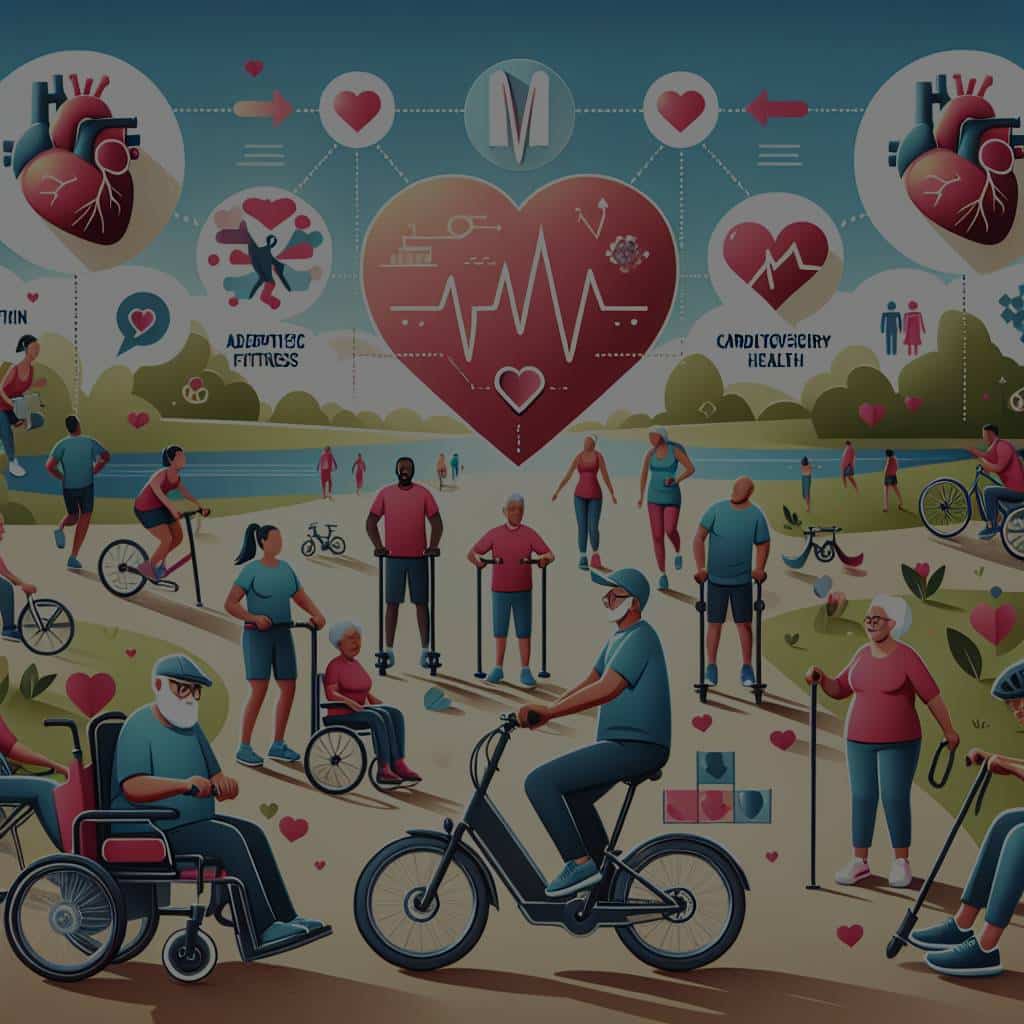How Can Electric-Assist Bicycles Promote Cardiovascular Health in Individuals with Mobility Issues?

Electric-assist bicycles, often referred to as e-bikes, are fast becoming a common sight in cities and towns all over the world. These bikes, equipped with an electric motor to aid in propulsion, are changing the way individuals think about transportation. But more than just a convenient way to get around, e-bikes offer a host of health benefits, especially for individuals with mobility issues. In this article, we will delve into how e-bikes can help boost cardiovascular health, their benefits in promoting physical activity, and how they can be utilized by seniors and individuals with mobility issues.
Cycling for Health: The Physical Benefits of Riding E-Bikes
Cycling is a fantastic form of physical activity, offering numerous benefits for overall health and wellbeing. E-bikes, in particular, can provide a great way to incorporate physical activity into daily routines, making it easier for individuals to meet and exceed the recommended levels of exercise.
Avez-vous vu cela : How Does Participating in Digital Literacy Programs Affect Mental Agility in Seniors?
Despite the assistance of an electric motor, riding an e-bike can still provide a significant cardiovascular workout. As you pedal, you’re engaging your heart and lungs, promoting better circulation and improving your overall cardiovascular health. Moreover, you can adjust the level of assistance on most e-bikes, allowing you to choose the intensity of your workout. This makes e-bikes a great option for individuals looking for a low-impact, customizable form of exercise.
E-Bikes and Cardiovascular Health: What the Studies Say
Several studies have highlighted the potential health benefits of e-bikes, including their role in promoting cardiovascular health. For instance, a study published in the DOI found that e-bike riders got nearly as much exercise as those on conventional bikes, suggesting that riding an e-bike can indeed be a beneficial form of physical activity.
A découvrir également : What Are the Health Benefits of Ocean Swimming in Cold Water?
According to another study, individuals who switched from driving to cycling, even just a few times per week, had a significantly lower risk of developing heart disease. This suggests that e-bikes could offer a valuable tool in preventive health care, helping individuals to become more active and thus lowering their risk of cardiovascular disease.
The Role of E-Bikes in Promoting Physical Activity among Seniors
For seniors and individuals with mobility issues, maintaining regular physical activity can be challenging. However, e-bikes can offer a solution. With the support of an electric motor, these bikes can help seniors to continue cycling or even take it up for the first time, opening the door to the numerous health benefits that this form of exercise provides, such as improved cardiovascular health, better balance and coordination, and enhanced mental wellbeing.
The adjustable assistance offered by e-bikes can be particularly beneficial for seniors and those with mobility issues, allowing them to set their own pace and gradually increase their physical activity levels. It’s a form of exercise that can be tailored to individual needs and abilities, promoting independence and helping to maintain mobility.
E-Bikes as a Means of Transportation: A Healthy Alternative
E-bikes are not just a means of exercise; they’re also an increasingly popular form of transportation. In urban areas, where traffic congestion is a common problem, e-bikes offer a convenient and efficient alternative to cars. But beyond their practical advantages, e-bikes can also encourage individuals to be more active in their daily lives.
Using an e-bike for commuting or running errands can help integrate physical activity into your routine in a way that’s easy and sustainable. In fact, studies have shown that people who cycle to work have a lower risk of heart disease and stroke. By replacing short car trips with e-bike rides, you’re not only doing your bit for the environment, but you’re also adding more physical activity to your day – a step that can have significant benefits for cardiovascular health.
In conclusion, the rise of e-bikes presents exciting opportunities for improving cardiovascular health and promoting physical activity, particularly among seniors and individuals with mobility issues. By offering a form of exercise that’s customizable, enjoyable and practical, these bikes can help more people to discover the health benefits of cycling, improving their quality of life and overall wellbeing in the process.
E-Bikes and Public Health: A Potential Solution to Sedentary Lifestyles
Electric bikes, or e-bikes, are often touted as a solution for those who find conventional cycling too strenuous or challenging due to age, health conditions, or fitness levels. As the world grapples with the public health crisis of sedentary lifestyles and associated issues like obesity and cardiovascular disease, e-bikes could offer a unique solution.
The Centers for Disease Control and Prevention recommends at least 150 minutes of moderate-intensity aerobic activity every week. However, many people find it difficult to incorporate this level of physical activity into their daily lives, often due to time constraints or simply a lack of motivation.
By providing pedal assist, e-bikes can make cycling more accessible, allowing individuals to engage in physical activity while also enjoying the outdoors and commuting efficiently. Riding an e-bike is a low-impact exercise, reducing strain on joints and muscles compared to other, more rigorous forms of exercise. This makes it a fantastic option for people with mobility issues or those recovering from injuries.
Notably, a study found on Google Scholar demonstrated a significant increase in the heart rate of individuals riding electric bikes, compared to their resting heart rate. This indicates that e-bikes can provide a substantial cardio workout, improving cardiac health over time.
E-bikes also stand as a viable mode of transportation, providing an answer to issues like traffic congestion in urban areas. The additional file provided by this study showed that people who used their e-bikes for commuting experienced improved physical health over time.
Conclusion: E-Bikes – A Future of Healthier Living
As we navigate the modern world, new solutions to traditional problems are constantly emerging. In the context of public health, the advent of electric bikes presents a promising opportunity. E-bikes offer a means of low-impact exercise, alongside being a feasible, eco-friendly mode of transportation.
For those with mobility issues or those simply looking to improve their cardiovascular health, riding an e-bike seems to be a great option. It is not just the physical health benefits which are appealing, but also the prospect of combating traffic congestion, reducing carbon emissions, and promoting a more active lifestyle.
Moreover, the customizable nature of e-bikes allows individuals to adjust the level of pedal assist as per their comfort, making it a more inclusive form of physical activity that caters to a wide range of abilities and fitness levels.
Looking at the growing body of evidence sourced from PubMed and Crossref, it is safe to say that electric bikes are more than just a trend. They have the potential to change the way we think about exercise, health, and transportation. While further research is needed to fully understand the long-term health benefits of e-bikes, the initial findings are promising and hint at a healthier, more active future for all.
